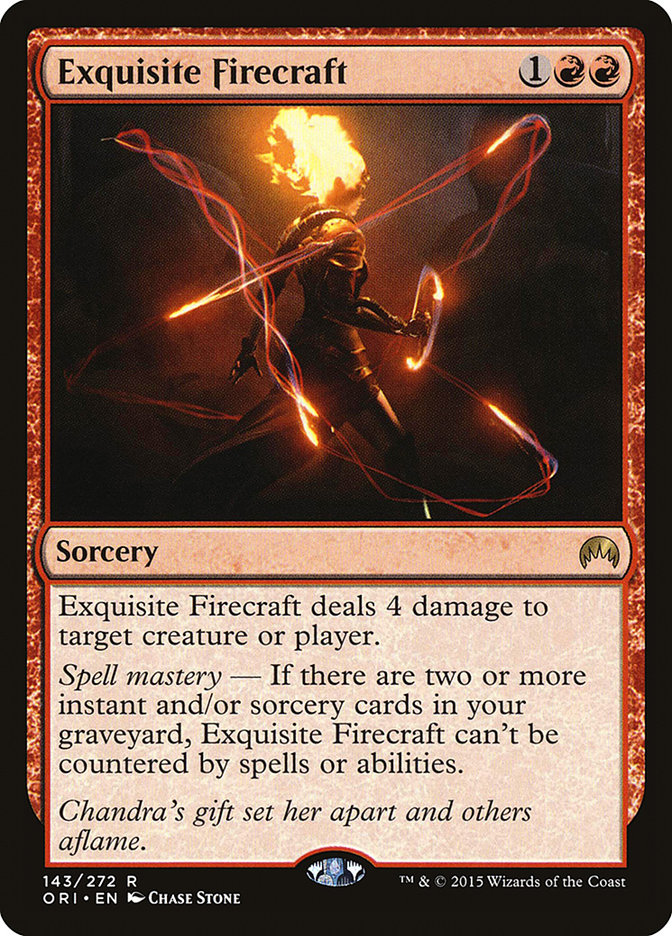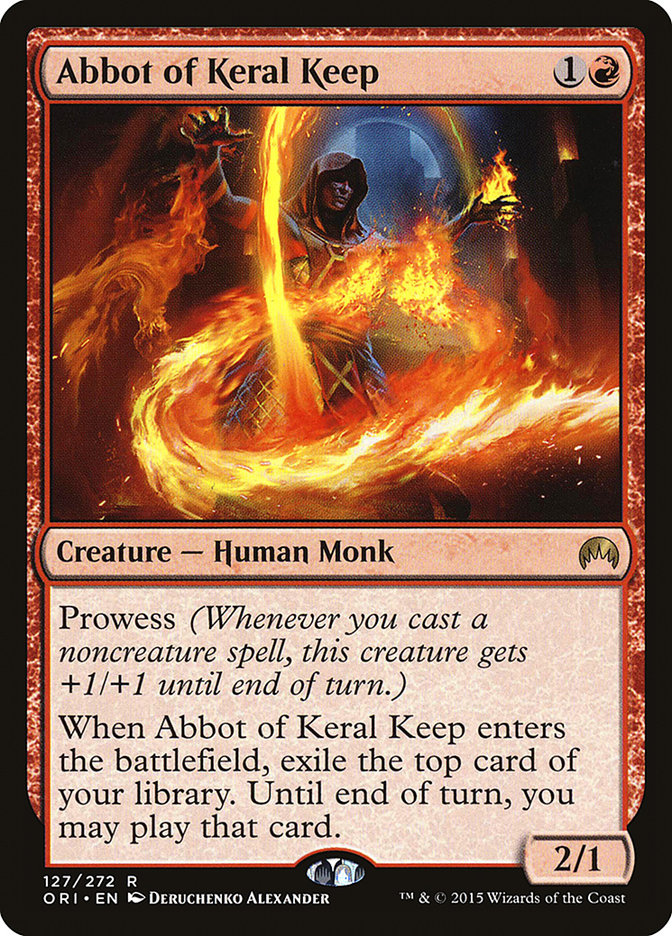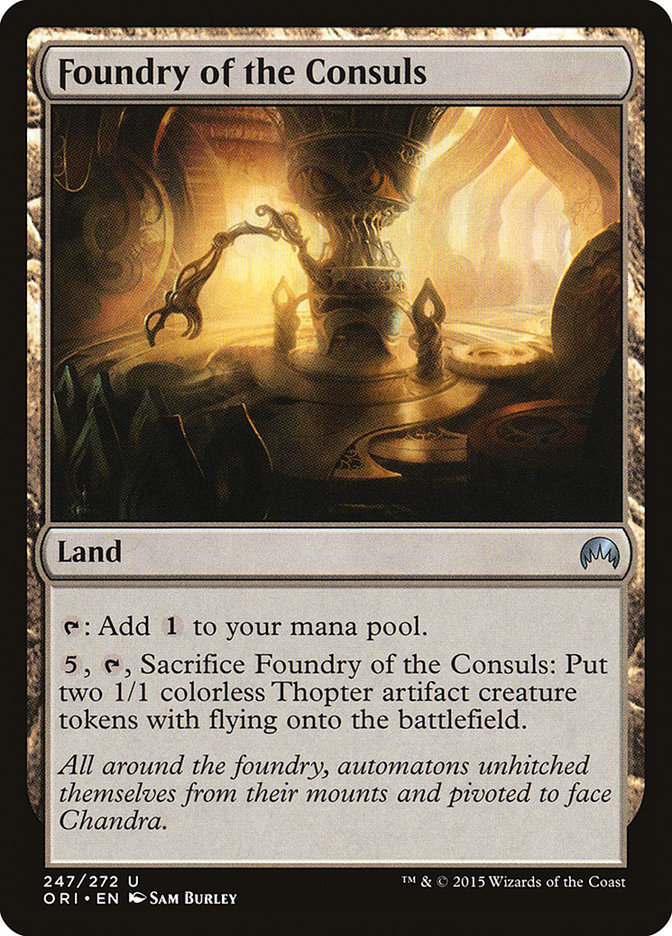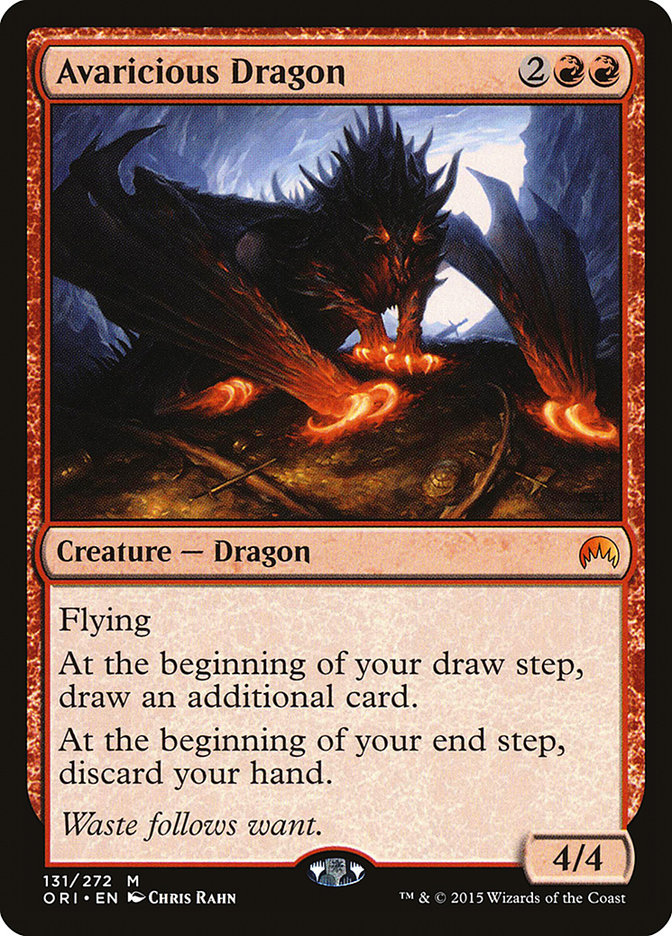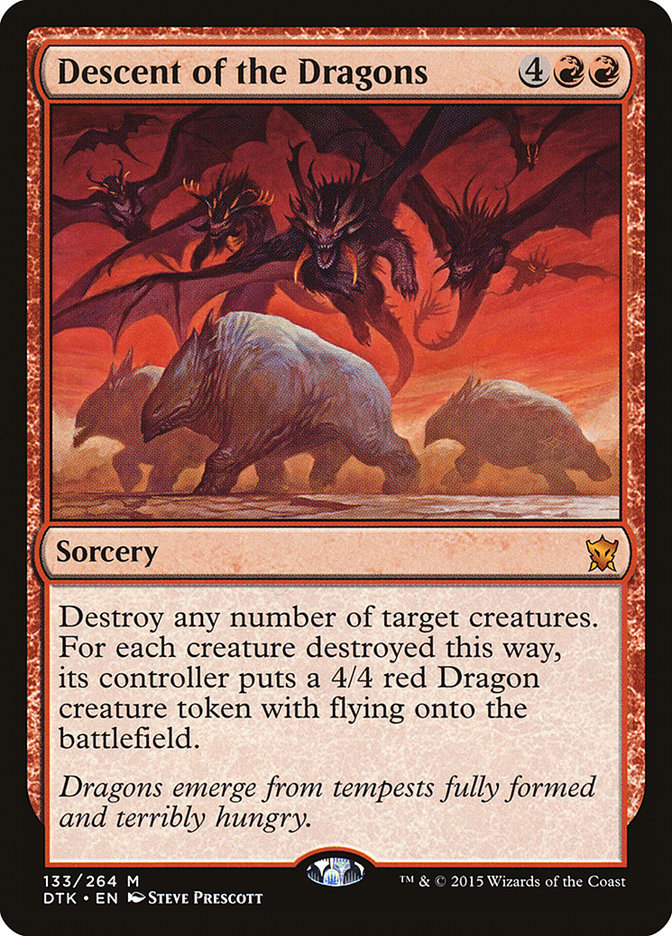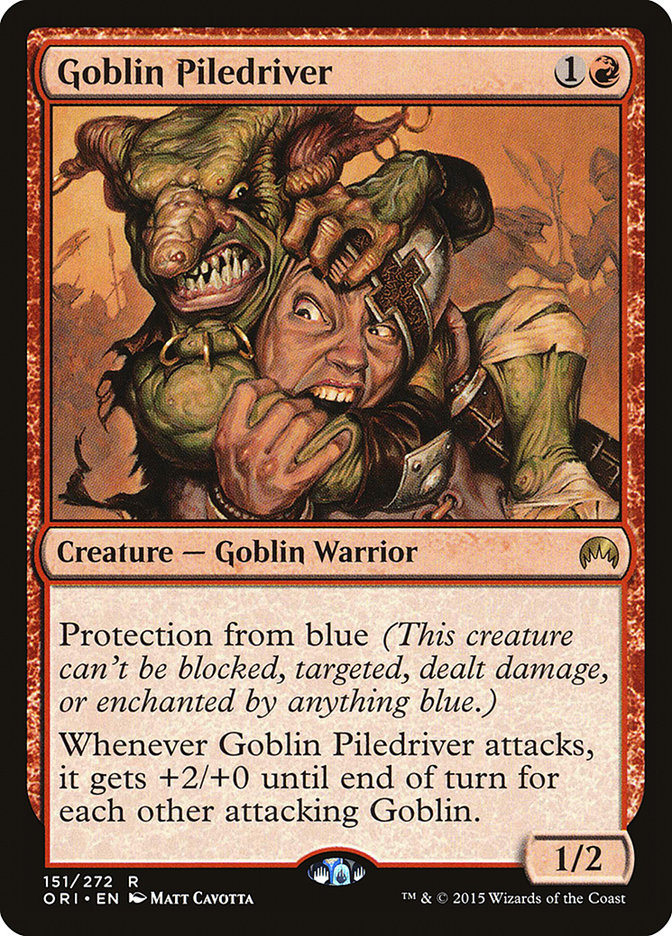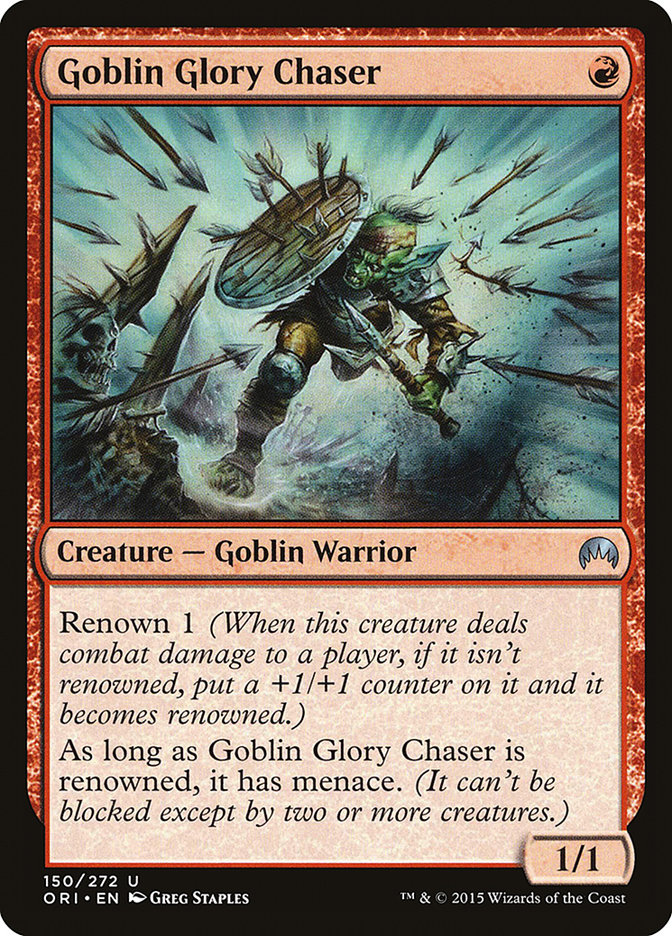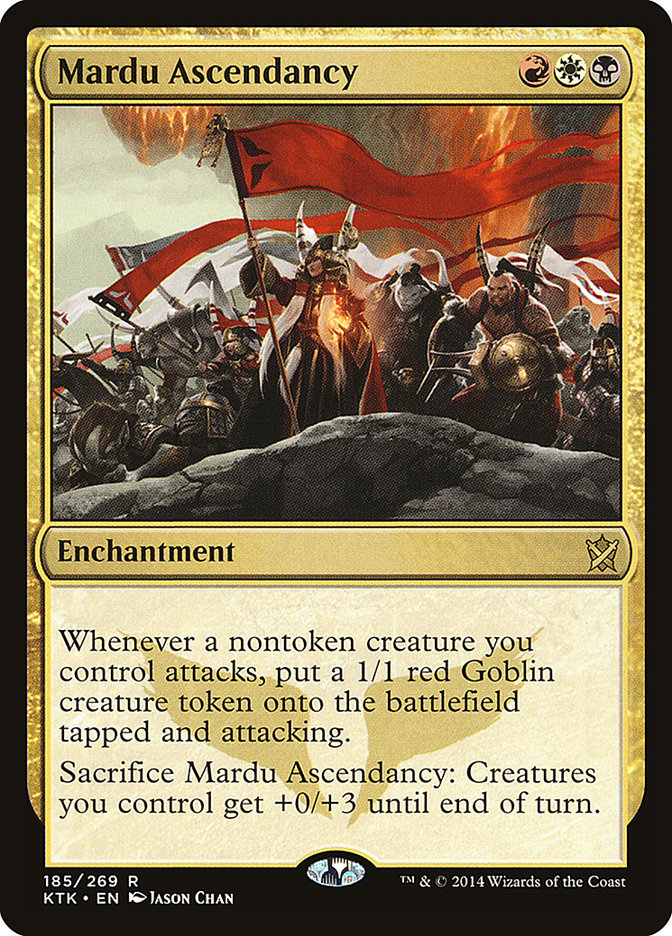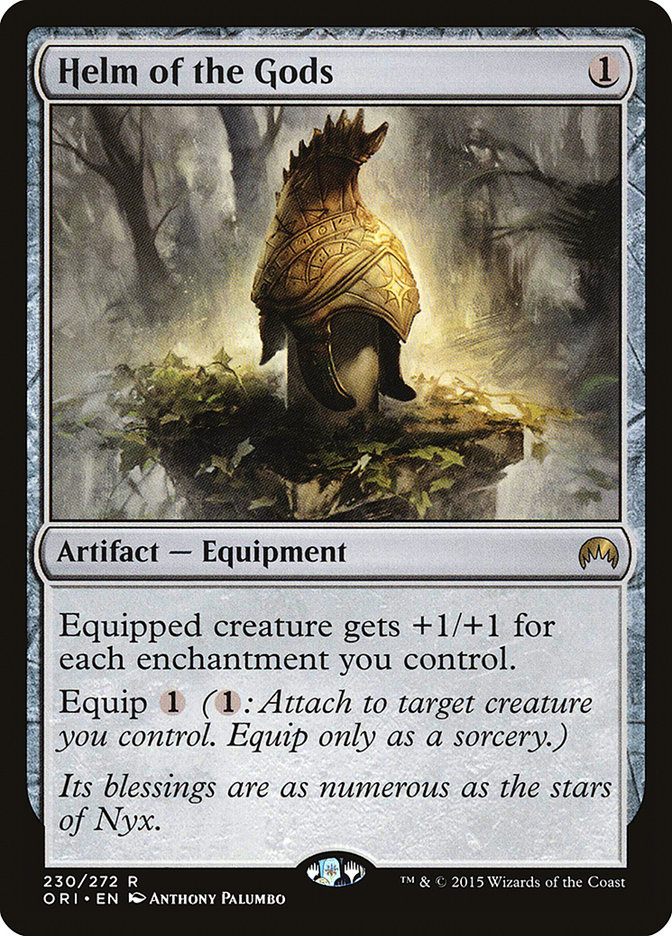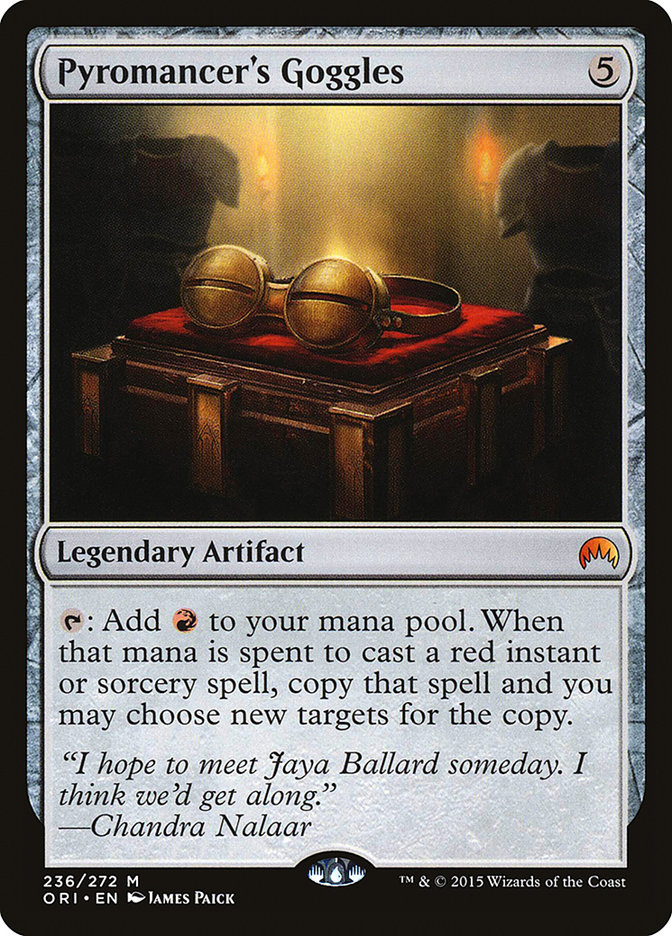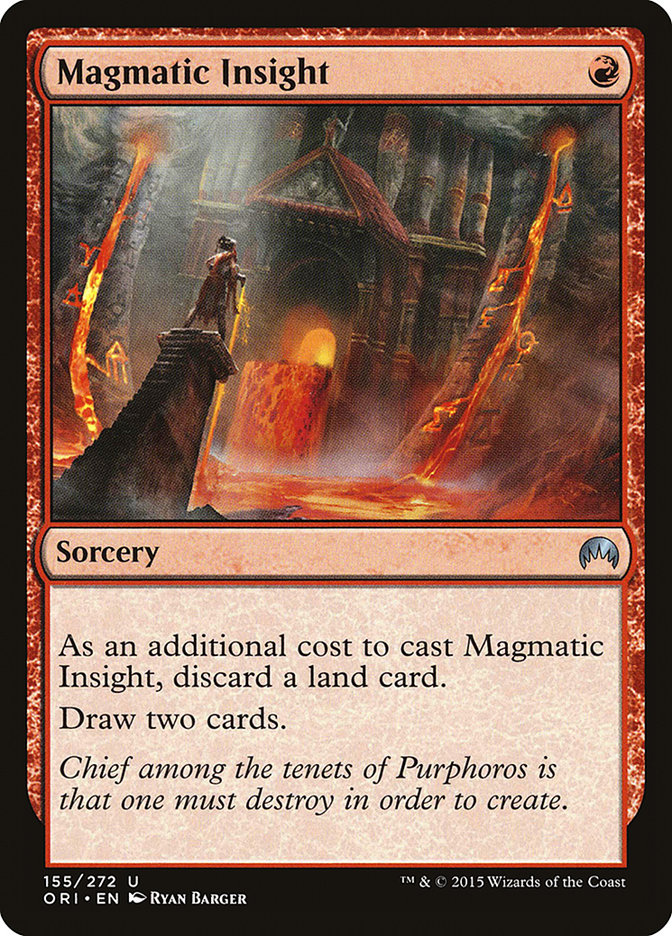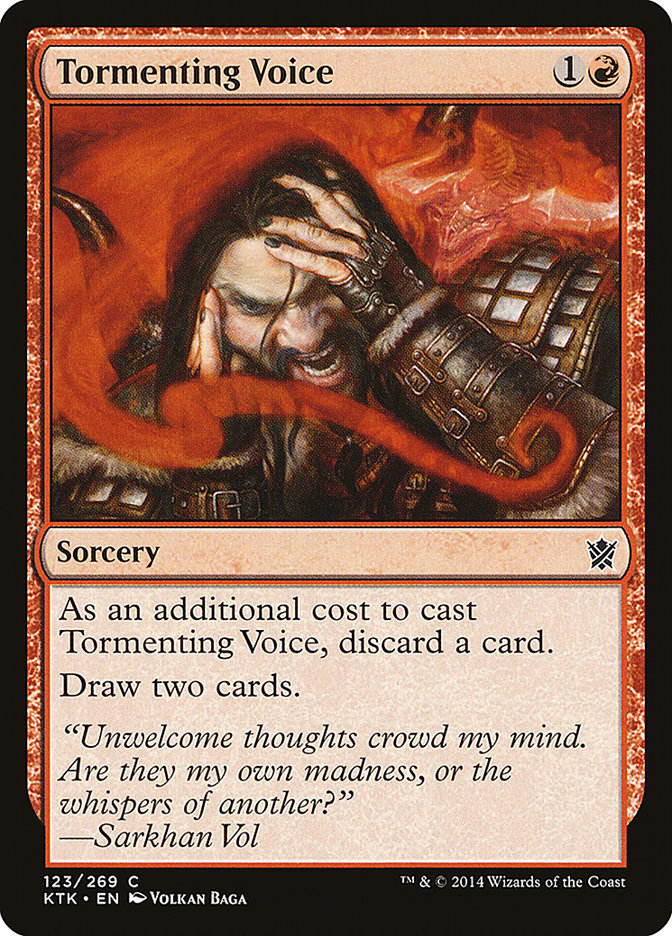Unless you’ve been living under a rock, you’re probably already neck deep in Magic Origins spoilers – and if you’re like me, you’re probably already brewing at work, in the shower, and in your sleep. The full spoiler has been posted, and Magic Origins is continuing in the tradition of Dragons of Tarkir by bringing more format-shifting cards than sets this size are typically capable of.
Now, it’s time to get down to business. The first priority is figuring out how to use all of the new cards. Later, we can worry more about which cards and strategies are best positioned. Trying to rate cards on a scale of 1-5 or 1-10 is a mental shortcut for avoiding continuing to think about cards objectively. It can be useful, but if you want to maximize your deckbuilding skills you’ll focus on figuring out the point of each card.
Different new cards call for different decks, even among the same color. Figuring out how all of the pieces fit together is a meta-puzzle we try to solve by first looking at each of the pieces. For instance, look at the red cards in this set. Historically, there have rarely been very many different ways to build red decks in any one format. Oh, there might be a variety of possible card choices, but there’s usually only so many ways to build a red deck on a strategic level.
Examining the red cards in Magic Origins reveals a wide sway of different decks supported from a variety of angles. Fast aggro, tokens, board control midrange, big mana ramp, burn, Goblins, Heroic, combo, and more are all supported, and that’s just red decks. Many of these decks overlap with each other, but that’s one of the major things we’re looking for.
Red aggro is probably the best place to start if we’re going to tackle red decks today. It’ll give us a baseline, something to compare our brews to. Remember, if our goal is to win the tournament, then “clever” is only useful so far as it is a means to that end.
Doing it! This card is great. A good comparison is Char, which was an instant and just single red, but did two damage to you and wasn’t (functionally) uncounterable. Char was a tournament staple throughout its Standard lifetime, and I expect the same to be true of Exquisite Firecraft.
Uncounterable does not mean unpreventable, however, so we still need to beware of Dromoka’s Command and Valorous Stance. Ripping through Silumgar’s Scorn, Dissolve, and the like is still a big game, particularly when we’re not even really paying for it (we’d play Exquisite Firecraft without the Spell Mastery text).
Red decks typically don’t love facing four-toughness threats like Courser of Kruphix or Brimaz, King of Oreskos. Yes, they have access to Stoke the Flames, but they don’t always have it, and even when they do, it is one of their best cards and casting it in that window often involves at least a small tempo loss.
Exquisite Firecraft means red decks now effectively have access to eight Stoke the Flames. It’s also better optimized for killing Courser or Brimaz on turn three, letting us get an extra attack in, instead of having to convoke a creature.
Stacking deal-4s on top of each other also makes each one better. Each one increases the threat of us burning someone all the way out. Each burn spell you point at someone’s face (and not a planeswalker), you are down a card… until you reduce their life total to zero and “combo off.”
Scab-Clan Berserker is one of my favorite cards in Magic Origins. In my old life, I would have been very likely to lose a lot more games because of it existing. However, a lot can change over the years. Now it’s just another piece of the puzzle, and I have a ton of respect for both its rate and its positioning.
If we just start with a 2/2 haste that gets +1/+1 the first time it hits our opponent, that’s already at least interesting. We wouldn’t play a 2/2 haste for three, of course; but we would at least consider a 3/3 haste for 1RR. The Berserker only misses out on one point of damage, though it does also ask us to complete the quest of actually connecting to get that +1/+1 counter.
The part of Scab-Clan Berserker that really elevates the card is the two damage trigger. When you successfully connect with it, it gains the ability to deal two damage to your opponent each time they cast a noncreature spell. This is a very, very strong ability to say the least.
Say they have a removal spell, and are just going to kill the Berserker when they untap. You are still getting an extra two damage in, more than making up for the one damage you “missed” the turn you played it. That’s four damage already, and that’s if they have a removal spell for it. It’s also particularly funny that the Berserker dodges Abzan Charm until it’s too late to stop the four damage.
Now, let’s imagine they don’t have a removal spell for your Berserker yet. The Berserker’s ability takes on a whole new meaning. If they are a combo deck, they might be dead in the water to the Berserker’s sort of one-way Pyrostatic Pillar. If they are a control deck, they’re taking two damage for their library manipulation spells, their planeswalkers, and their counterspells. Even if you are just punishing them for casting Commune with the Gods or Thoughtseize, the damage adds up.
Of course, it is not a sure thing that you actually hit someone with your Berserker. The card is very much designed to be played with a lot of burn to get it through, and other early pressure to force people to react and to make the damage more relevant.
The red aggro card I am most excited about, however, is Abbot of Keral Keep. I am absolutely in love with this card, and the probability that I play red goes way up because of its printing. In some ways, it’s the red Snapcaster Mage.
A 2/1 prowess creature for one mana would be fantastic. For two mana we need a little more, but not much. After all, it’s often going to be able to deal three or more damage. There’s also value to your opponent not knowing how big it will actually be. For instance, is it safe for a Courser of Kruphix to block the Abbot? Two instants and you’re chump blocking.
But if we have two instants, aren’t we going to be able to kill the Courser, anyway…?
Obviously some of the time it doesn’t matter. Some of the time you have two Wild Slashes and it was going to play out the same way regardless. However, some of the time, you have two Lightning Strikes. And some of the time, your opponent also has an Elvish Mystic. And sometimes you play a Dragon Fodder or Hordeling Outburst before combat, meaning it takes only a single Wild Slash for the blowout.
Under most circumstances, Abbot of Keral Keep is going to be a pretty respectable two-drop. However, we generally only want to play it as a two-drop if we don’t have any other plays to make. The better play is to save it as long as we can (though we usually would rather play it than do nothing).
The Abbot’s enters-the-battlefield trigger is actually extremely skill-testing, despite how much it can seem like luck. You get to decide when to cast it, which will effect whether or not you get a card you can cast. You have control over the probabilities, and your assessment of the board can allow you to manipulate how much you get out of the trigger.
To really appreciate the ability, we need to look at an actual list. That way, we can get an idea of what the normal-use case looks like and what the probabilities we’re dealing with are.
Creatures (23)
Spells (37)
Sideboard

Here, we are looking to play Abbot of Keral Keep on turn three or later. Right off the top, we’re drawing more than a third of a card because of the possibility of drawing a land. If we have a third land in hand, however, we also have any of the one-drops as hits, and even Wild Slash (though if we have another one-drop in hand and our opponent has no creatures, we might decide not to cast it). Hell, we might even have Stoke the Flames as a live hit, if we opened with a one-drop on turn 1 and two more one-drops on turn two!
Abbot of Keral Keep starts to approach 100% of an extra card as the game goes on, though there is always some amount of limiting of options because of the timing. If we reveal a Lightning Strike, the opponent might only have to not block with their Siege Rhino for one turn to play around it. If we reveal a Zurgo when we already have one, we’re not super thrilled (although this can be largely avoided by erring on the side of dashing Zurgo whenever it’s turn three or later).
There are going to be times we play Abbot of Keral Keep on turn three, but do not have a third land. In such spots, we don’t really have one-drops as “hits.” However, when we are short on land, flipping a nonland card we can’t cast is often nearly as good as drawing an extra card anyway. In more cases than not, we are effectively scrying 1, digging for land. That’s supposed to be the fail state, yet, it gets us closer to what we need.
It’s not fair.
The aggro red cards aren’t supposed to draw extra cards like this! This is going to disrupt the balance of power, the formula of trading removal spells one-for-one to buy oneself time against red decks. This is part of a growing theme of red cards that generate a variety of forms of card advantage. This has me wondering if there might be room for something a bit more “Sligh”-like, a more mid-range-y red deck.
Creatures (22)
- 4 Firedrinker Satyr
- 4 Prophetic Flamespeaker
- 4 Monastery Swiftspear
- 2 Zurgo Bellstriker
- 4 Ire Shaman
- 4 Abbot of Keral Keep
Planeswalkers (1)
Lands (2)
Spells (35)
Sideboard

Ire Shaman is a totally fine card, but quite a bit weaker than Abbot of Keral Keep. You have to pay three up front, instead of two. And then the turn you use it, you have to spend an extra mana. In exchange for this, you get a higher number of overall hits for that turn. Unfortunately, you are also more vulnerable to removal (since a single Lightning Strike leaves you with nothing most of the time). It is all upside when you have plenty of extra mana, though.
Speaking of extra mana, Foundry of the Consuls is a solid way to get a little extra mileage out of your mono- or two-color manabase. Spending five and tapping a land is effectively six mana, making the cost comparable to Stalking Stones. Instead of a 3/3, you get two 1/1 flying artifact creatures, which is at least comparable (and probably slightly better in normal-use cases). It’s hard to play in a deck with this low of a curve, but there will be some lists that want 3-4 (usually with more four-drops in them).
Normally red decks get a lot of mileage of their one-drops, but this style of red deck isn’t exactly getting the most efficiency out of the ones it uses. Monastery Swiftspear sort of fits the theme, being both aggressive and a respectable brawler when paired with instant-speed burn. Firedrinker Satyr is much less on-theme, with its drawback becoming worse and worse the more controlling we get. At least it gives us another way to use our mana later. Zurgo is just totally off-theme.
The problem is, we just don’t have access to nice things like Grim Lavamancer or even Magus of the Scroll. If we are going to add tapped lands, we might as well add two colors. Crackling Doom certainly has a lot of appeal in a red deck. It’s great at killing the creatures that are usually the hardest and the extra damage is always appreciated.
Creatures (19)
- 4 Goblin Rabblemaster
- 3 Seeker of the Way
- 4 Monastery Swiftspear
- 4 Soulfire Grand Master
- 4 Abbot of Keral Keep
Lands (19)
Spells (22)

Factor in how much we usually want to play Abbot on turn three or later and that is starting to look like a lot of three-drops. I guess in some ways, the Abbot is a four-drop that can be played on turn two or three. Still, Rabblemaster, Firecraft, and Doom is a lot of action on turn three.
Alternatively, we could try to push the deal-four theme. Adding a playset of Jeskai Charms brings us up to twelve deal-4s, meaning we don’t actually need all that much early damage to burn someone out. After all, Dig Through Time will usually be worth eight damage by itself.
Creatures (16)
Lands (18)
Spells (26)

I see we are still not short on threes, but that is often the problem in Standard these days. How much we should consider Abbot of Keral Keep a three-drop and how much we should consider it a two-drop remains to be seen. After all, we are going to typically play it on turn two when we have no other two-drop. However, there are going to be plenty of times where we play a second tapped land on two instead. Part of the equation is what you’re up against. If your opponent has a lot of cheap removal, you are more likely to want to slow things down and get the most you can out of your cards.
Red decks without one-drops don’t have to add colors, though. Another possibility is to just aim a lot bigger, perhaps a return to red devotion. After all, Scab-Clan Berserker is another double-mana-symbol card, and we still haven’t put Dragon Whisperer to good use yet.
Creatures (33)
- 4 Stormbreath Dragon
- 4 Fanatic of Mogis
- 4 Eidolon of the Great Revel
- 1 Soul of Shandalar
- 4 Flamewake Phoenix
- 4 Thunderbreak Regent
- 4 Dragon Whisperer
- 4 Abbot of Keral Keep
- 4 Scab-Clan Berserker
Lands (10)
Spells (17)
Sideboard

The original plan was to use Mardu Scout to get extra devotion, but Abbot of Keral Keep seems like too much stronger of a card. This list actually makes relatively poor use of the Abbot, since it has almost no maindeck noncreature spells and enough expensive cards that the Abbot is going to miss a lot. However, just having extra chances to hit land drops is appealing, and Nykthos makes it more likely that we can play anything we reveal in the midgame.
How much do the new cards even help this strategy though? The only other new card is Scab-Clan Berserker, and this isn’t the best home for that card either. Why would using two strong cards poorly be enough to bring this deck back? I would guess we could try splashing white for Chained to the Rocks:
Creatures (31)
- 4 Stormbreath Dragon
- 4 Fanatic of Mogis
- 4 Eidolon of the Great Revel
- 4 Flamewake Phoenix
- 4 Thunderbreak Regent
- 4 Dragon Whisperer
- 4 Abbot of Keral Keep
- 3 Scab-Clan Berserker
Lands (16)
Spells (13)

I feel like this doesn’t really address our fundamental problems though. It helps get the Berserker through, a little, I guess. It makes us even more likely to miss on Abbot of Keral Keep though. There has to be more we can do with Stormbreath Dragon and Thunderbreak Regent besides just updating Mardu and G/R Dragons.
Stormbreath Dragon and Thunderbreak Regent did gain a new “buddy,” if you just really want another four-cost Dragon. Maybe we can go harder on the Dragon theme now that we have access to Avaricious Dragon.
Creatures (20)
- 4 Stormbreath Dragon
- 4 Dragonlord's Servant
- 4 Thunderbreak Regent
- 4 Dragon Whisperer
- 4 Avaricious Dragon
Lands (8)
Spells (32)

I gotta, say, this deck looks terrible.
So, to start with, Avaricious Dragon kind of needs to be the last Dragon to the party. Otherwise you are Mind Twisting yourself, then it gets killed by a Hero’s Downfall or whatever. Accelerating it out turn three is absurdly reckless.
Now, I love the Dragon Tempest + Descent of the Dragons combo, no question. With just three creatures in play you are presenting 21 damage: each creature becomes a Dragon that triggers a three-point Tempest, and each can attack for four points of haste. That said, it seems more appropriate in a dedicated combo deck. You just can’t set up Descent of the Dragons if you are casting cards like Avaricious Dragon.
Truth be told, I think big mana is probably the wrong way to do Red Devotion. Fanatic of Mogis is still a fine payoff, but what if that’s the extent of our interest in the mechanic?
Creatures (30)
Spells (30)
Sideboard

This looks like a much better direction. Scab-Clan Berserker is a great fit in this deck, and could be even better if we up the cheap burn. Abbot of Keral Keep helps us actually hit our four-drops on time despite playing just twenty lands. We also get to make use of Exquisite Firecraft, which also makes the Abbot’s Prowess trigger more often.
Having such a low land count means Mardu Scout is probably better than Dragon Whisperer. In fact, I could actually see Eidolon of the Great Revel instead of Dragon Whisperer, but maybe we’re supposed to just let Abbot be the other two-drop. There is, of course, a far more flashy home for Mardu Scout, now that Magic Origins is in the mix…
…Enter the Goblins!
Creatures (24)
Spells (36)
Sideboard

The loudest reason for Goblin tribal to be a thing is the reprinting of Goblin Piledriver.
If you like daydreaming about goldfishing against defenseless opponents, Goblin Piledriver is perfect for you! However, it is also just a straight-up powerful Magic card that happens to work great with Goblin Rabblemaster. Turn one Foundry Street Denizen, turn two Goblin Piledriver, turn three Goblin Rabblemaster. That’s ten damage by turn three with another fifteen showing for next turn!
Most of the time a Goblin Piledriver will present an absurd amount of power, but it is a very clumsy, blunt instrument. Without a good way to give it haste, opponents are generally going to be able to see it coming and brace themselves. Additionally, it doesn’t really do all that much unless you can get it through. This makes me want to look to up the amount of removal we are playing.
Every one-drop Goblin is worth considering, but this one can actually hit for two a turn. That means there is a whole lot of glory to be chased, but once again we need to make sure we don’t hit a wall. Frenzied Goblin is especially attractive in this regard, but we probably need a little more cheap interaction. Of course, that introduces tension with Obelisk of Urd, which wants us to play as many permanents as possible.
Comboing Mardu Ascendancy with Goblin Piledriver and Obelisk of Urd would be a dream come true, but making the mana work seems like quite the challenge. You can start off with Mana Confluence, Battlefield Forge, Caves of Koilos, and Bloodstained Mire, but you are still going to need some tapped lands, which really disrupts our ability to curve 1-2-3. That’s also a lot of pain.
Of course, Goblins is hardly the only red weenie linear to get pushed with this set. Another possibility to try is a return to Red Heroic:
Creatures (20)
Spells (40)
- 18 Mountain
- 4 Dragon Mantle
- 2 Stoke the Flames
- 4 Hammerhand
- 1 Inferno Fist
- 4 Infectious Bloodlust
- 4 Helm of the Gods
- 3 Call of the Full Moon
Sideboard

Magic Origins features a couple new auras to target our heroes with:
Personally, Infectious Bloodlust is definitely my favorite of the two. While not as strong as Rancor, the card does have some similarities. It’s a great way to commit more power to the board (with virtual haste) without overextending against sweepers. Just be careful to avoid getting the Bloodlust fizzled if at all possible. If they Hero’s Downfall your creature in response to the spell, the “chain” is broken and you don’t get a replacement Bloodlust.
Lots of auras work well with Satyr Hoplite and Akroan Crusader, but Infectious Bloodlust is particularly sweet, triggering Heroic each time you cast it (though generally, just once per Heroic creature). That it gives haste is also a nice addition. Between Hammerhand and Infectious Bloodlust, we’re usually going to be able to commit an extra attacker on turn three.
I don’t find Call of the Full Moon as appealing, and I wouldn’t be surprised if we just can’t play it given how much we’d like to play two spells in a turn. That said, it is a virtual three-power two-drop with “haste,” since you get to deal damage with it the turn you play it. That it gives trample is also much appreciated in conjunction with Helm of the Gods.
Count on Helm of the Gods to be an instant include in Modern G/W Hexproof, but I could also see it showing up in Standard thanks to its synergy with enchantment creatures. Taking just one to cast and one to equip is a very minor investment, and it doesn’t seem unreasonable to get the three or more enchantments needed to really get our money’s worth. With enchantments constituting a full third of our deck, we are looking at drawing about three by the second turn, so maybe we can get there.
A big challenge for Helm of the Gods is how many little sacrifices you make for it. For instance, I’ve cut Titan’s Strength since it’s not an aura and we already have so many cards to pump our creatures. I also think Mogis’s Warhound wouldn’t make the cut if we didn’t need it to be an enchantment for our Helm.
The Abbots of Keral Keep in this deck are absolutely fantastic! Almost every card in our deck costs one, so we are going to get the extra card very often. It’s also a great way to find a third mana despite having such a low land count. Finally, the prowess ability gets triggered a great deal, including multiple triggers from Infectious Bloodlust over time.
Even though there are enough red auras to play this Mono-Red, we might want to push Helm of the Gods even harder and add white for Heliod’s Pilgrim and Chained to the Rocks:
Creatures (20)
Lands (10)
Spells (30)

Doing the work it takes to make the white splash happen isn’t actually that hard, but finding the right balance of Auras is not an easy task. I definitely feel like there might be something here, but it’s going to take some work. I don’t think we want to go as big as Sage’s Reverie (a fun Pilgrim target to be sure), but it’s a possibility. We also could shift away from Helm of the Gods and instead build around Call of the Full Moon, Titan’s Strength, and Temur Battle Rage.
Turn one: Satyr Hoplite.
Turn two: Call of the Full Moon, attack for five.
Turn three: Titan’s Strength, Temur Battle Rage, attack for eighteen.
The last red deck I’d like to take a look at today is Mono-Red Burn. The printing of Exquisite Firecraft an important piece, but if Mono-Red Burn is tier one, I think it is likely because of this card:
How good Pyromancer’s Goggles are is going to surprise a lot of people, because it is so unlike cards they are used to being good. The thing you gotta remember is that it is basically drawing you an extra card each time you use it, plus it is giving you a huge mana boost. It’s not just that you’re getting a red mana out of it, you’re also saving the entire cost of the spell you copied for free. It’s like a Mirari that costs four less to use (and Mirari’s trigger only cost three…).
It is legendary, but if you are successfully Goggling every turn, your opponent is in a lot of trouble. Besides, what happens if you have a Pyromancer’s Goggles in play, another in your hand, and two Shrapnel Blasts?
Simple. Here, let me Goggle that for you…

If you copy a spell with the Goggles, you don’t have to pay additional costs, such as Shrapnel Blast’s sacrificing an artifact. That means a single Shrapnel Blast is ten damage, which is a great thing to do with any extra Goggles you may have laying around that you were going to legend rule anyway.
Similarly, Magmatic Insight and Tormented Voice are mondo-combos with the Goggles, each drawing four cards while requiring you to discard just one. Magmatic Insight is particularly sweet since it gives you something great to copy the turn you play the Goggles. Meanwhile, Tormented Voice is another way to put any extra Goggles you draw to use.
Lands (13)
Spells (47)
- 12 Mountain
- 4 Shrapnel Blast
- 4 Lightning Strike
- 1 Searing Blood
- 4 Stoke the Flames
- 4 Tormenting Voice
- 4 Wild Slash
- 2 Kolaghan Monument
- 4 Exquisite Firecraft
- 4 Pyromancer's Goggles
- 4 Magmatic Insight
Sideboard

Packing so few burn spells, relatively speaking, may look surprising, but with this much card draw it’s going to feel like much more. We’ve got a higher-than-usual mana count to help support Magmatic Insight, and we do need to get up to five, anyway.
A lot of red cards still remain (Chandra?!?), but this a pretty good start. Plus there are four other colors! It also helps illustrate just how much depth there is in Magic Origins. This set is going to shake up the format more than any eighth set in a Standard format in recent memory.
I’ll be back Monday, Wednesday, and Friday of next week with a complete set review for Magic Origins, so let me know what cards and what you decks you want covered. All requests will be attempted!
Now, let’s get down to brewing!

